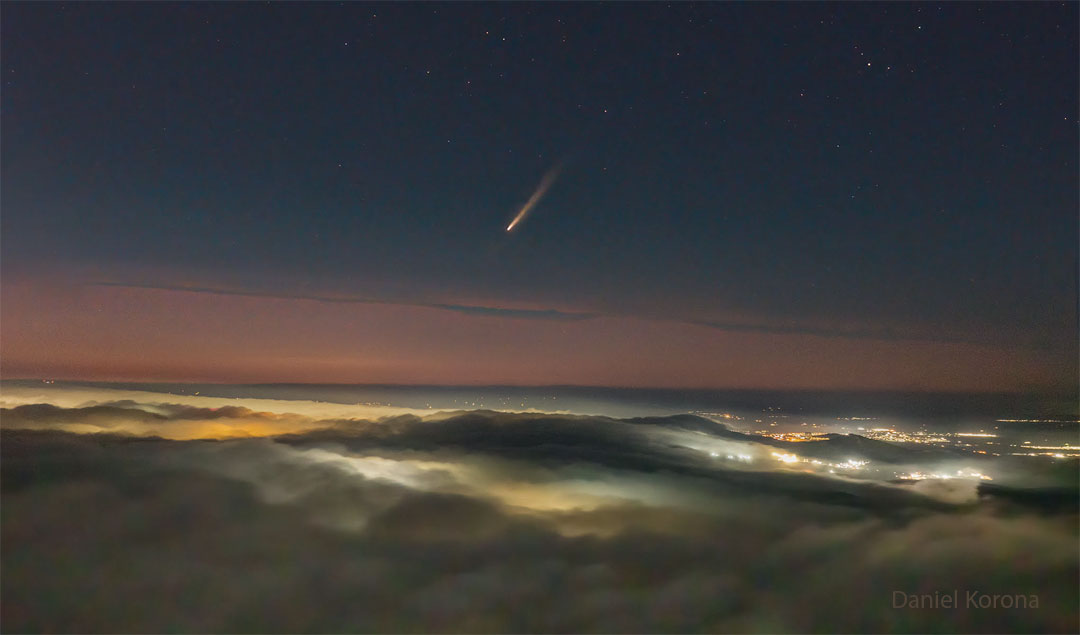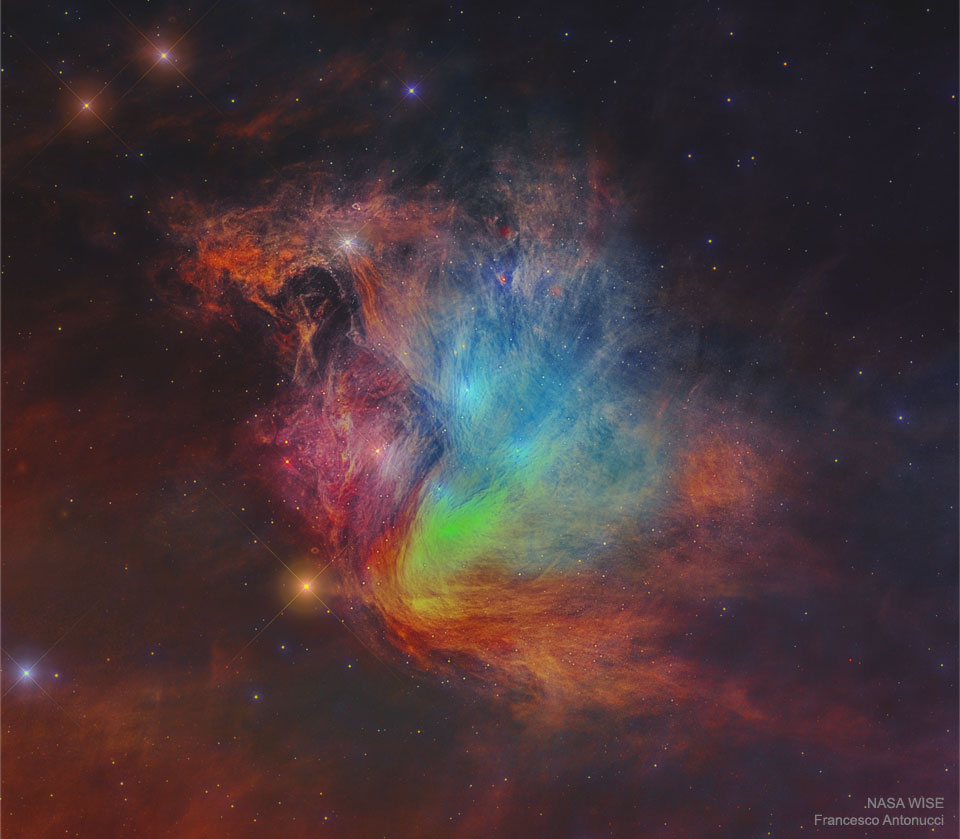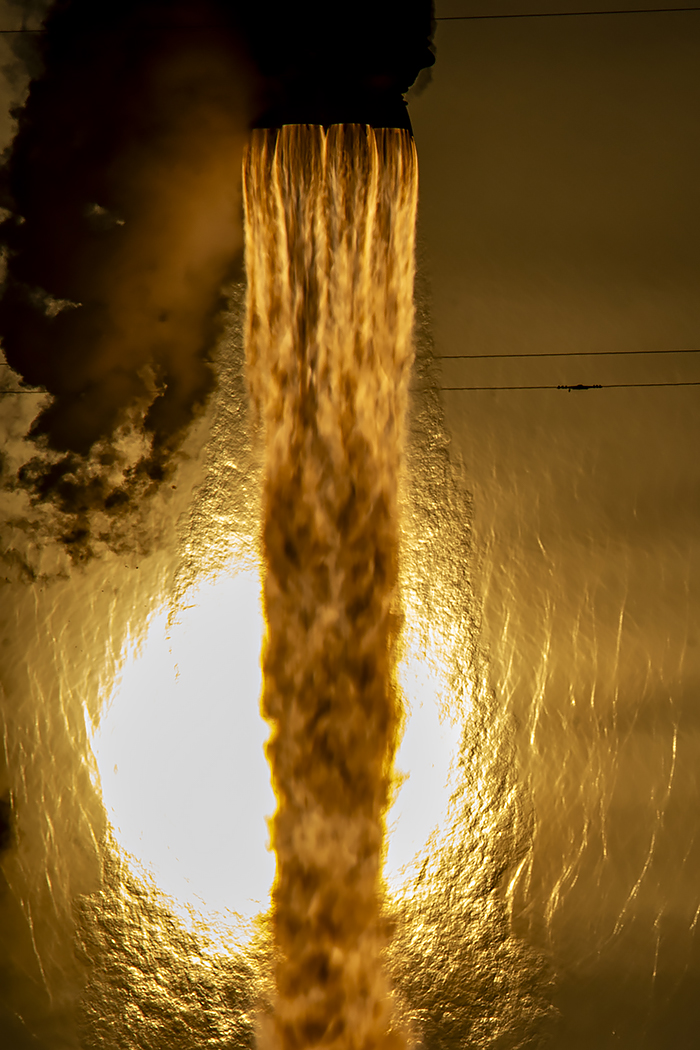Nombre total de pages vues
01/10/2024
ASTRONOMY - Porphyrion: The Longest Known Black Hole Jets
2024 October 1
Animation Credit: Science Communication Lab for Martijn Oei et al., Caltech
Explanation: How far can black hole jets extend? A new record was found just recently with the discovery of a 23-million light-year long jet pair from a black hole active billions of years ago. Dubbed Porphyrion for a mythological Greek giant, the impressive jets were created by a type of black hole that does not usually create long jets -- one that is busy creating radiation from infalling gas. The featured animated video depicts what it might look like to circle around this powerful black hole system. Porphyrion is shown as a fast stream of energetic particles, and the bright areas are where these particles are impacting surrounding gas. The discovery was made using data from the Keck and Mayall (DESI) optical observatories as well as LOFAR and the Giant Metrewave Radio Telescope. The existence of these jets demonstrates that black holes can affect not only their home galaxies but far out into the surrounding universe.
30/09/2024
LES NUAGES - DIEUX DU CIEL - Nuage lenticulaire sur le mont Cook en Nouvelle-Zélande
INVENTIONS A L'HORIZON 2050 - Les ponts qui s'auto-réparent
ASTRONOMY - Comet Tsuchinshan-ATLAS over Mexico
2024 September 30
Image Credit & Copyright: Daniel Korona
Explanation: The new comet has passed its closest to the Sun and is now moving closer to the Earth. C/2023 A3 (Tsuchinshan–ATLAS) is currently moving out from inside the orbit of Venus and on track to pass its nearest to the Earth in about two weeks. Comet Tsuchinshan-ATLAS, pronounced "Choo-cheen-shahn At-less,", is near naked-eye visibility and easily picked up by long-exposure cameras. The comet can also now be found by observers in Earth's northern hemisphere as well as the south. The featured image was captured just a few days ago above Zacatecas, Mexico. Because clouds were obscuring much of the pre-dawn sky, the astrophotographer released a drone to take pictures from higher up, several of which were later merged to enhance the comet's visibility. Although the future brightness of comets is hard to predict, there is increasing hope that Comet Tsuchinshan-ATLAS will further brighten as it enters the early evening sky.
29/09/2024
MUSIQUE - Scott Joplin - The entertainer
Scott Joplin (entre juillet 1867 et janvier 1868 - 1er avril 1917) était un compositeur et pianiste afro-américain, né près de Texarkana, au Texas, dans la première génération post-esclavagiste. Il est devenu célèbre pour ses compositions uniques de ragtime et a été surnommé le « roi du ragtime ». Au cours de sa brève carrière, il a écrit quarante-quatre pièces originales de ragtime, un ballet de ragtime et deux opéras. L’une de ses premières pièces, le « Maple Leaf Rag », est devenue le premier et le plus influent succès du ragtime, et l’est restée pendant un siècle.
ASTRONOMY - Seven Dusty Sisters
2024 September 29
Image Credit: WISE, IRSA, NASA; Processing & Copyright : Francesco Antonucci
Explanation: Is this really the famous Pleiades star cluster? Known for its iconic blue stars, the Pleiades is shown here in infrared light where the surrounding dust outshines the stars. Here, three infrared colors have been mapped into visual colors (R=24, G=12, B=4.6 microns). The base images were taken by NASA's orbiting Wide Field Infrared Survey Explorer (WISE) spacecraft. Cataloged as M45 and nicknamed the Seven Sisters, the Pleiades star cluster is by chance situated in a passing dust cloud. The light and winds from the massive Pleiades stars preferentially repel smaller dust particles, causing the dust to become stratified into filaments, as seen. The featured image spans about 20 light years at the distance of the Pleiades, which lies about 450 light years distant toward the constellation of the Bull (Taurus).
28/09/2024
SANTé/MEDECINE - ALIMENTATION - NUTRIMENTS - Les vitamines : des petites molécules aux grandes responsabilités
INVENTIONS A L'HORIZON 2050 - Dévier les cyclones pour éviter les catastrophes
ASTRONOMY - Rocket Eclipse at Sunset
Image Credit & Copyright: Ben Cooper (Launch Photography)
Explanation: Shockwaves ripple across the glare as a launch eclipses the setting Sun in this exciting close-up. Captured on September 17, the roaring Falcon 9 rocket carried European Galileo L13 navigation satellites to medium Earth orbit after a lift-off from Cape Canaveral on Florida's space coast. The Falcon 9 booster returned safely to Earth about 8.5 minutes later, notching the 22nd launch and landing for the reusable workhorse launch vehicle. But where did it land? Just Read the Instructions.
ASTRONOMY - M16: Pillars of Star Creation
2024 October 22 M16: Pillars of Star Creation Image Credit: NASA , ESA , CSA , STScI ; Processing: Diego Pisano Explanation: These da...

-
2022 September 26 All the Water on Planet Earth Illustration Credit: Jack Cook, Adam Nieman, Woods Hole Oceanographic Institution ; Data ...
-
2021 August 11 Mammatus Clouds over Saskatchewan Image Credit & Copyright: Michael F Johnston Explanation: When do cloud bottoms appe...







